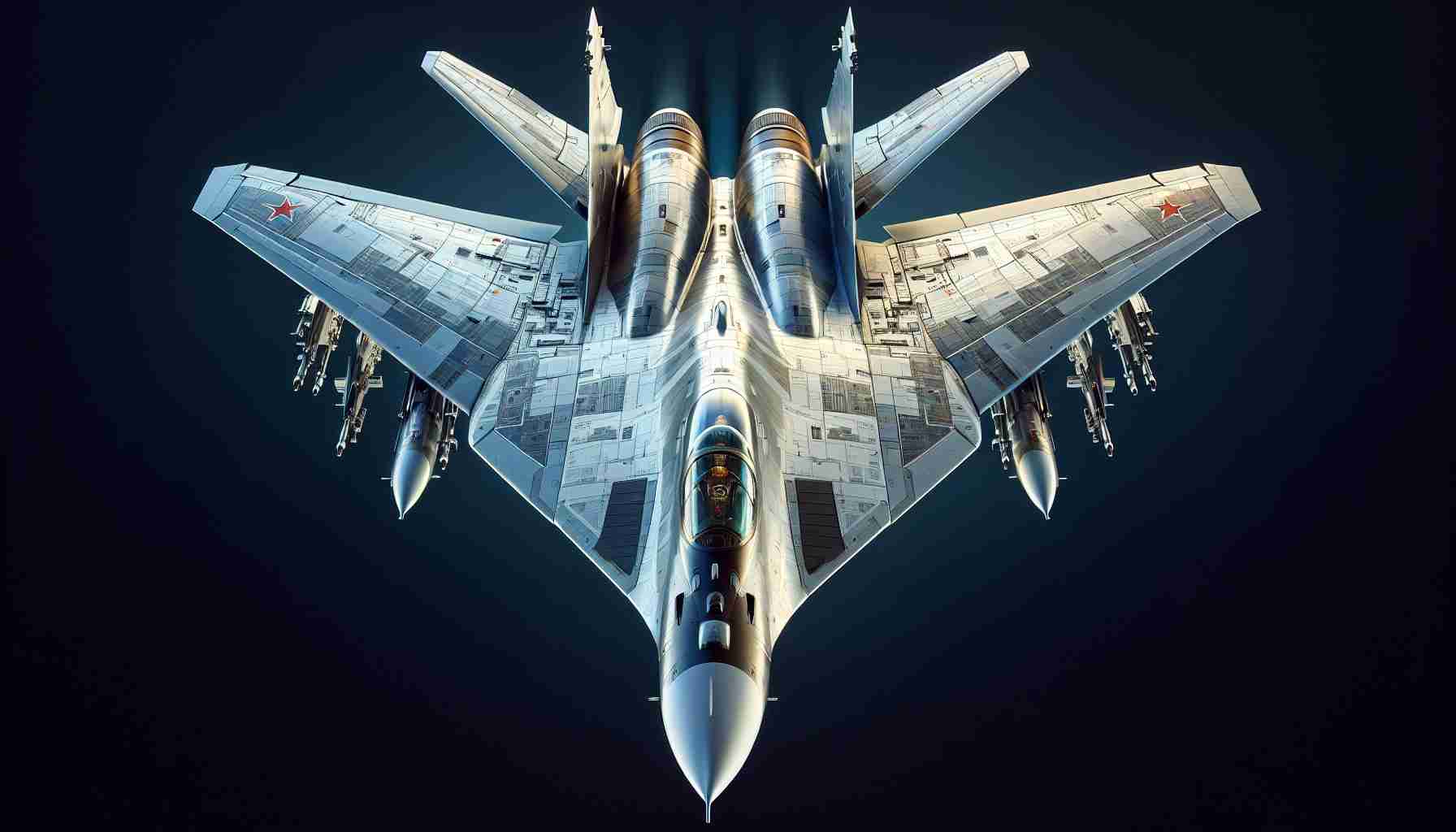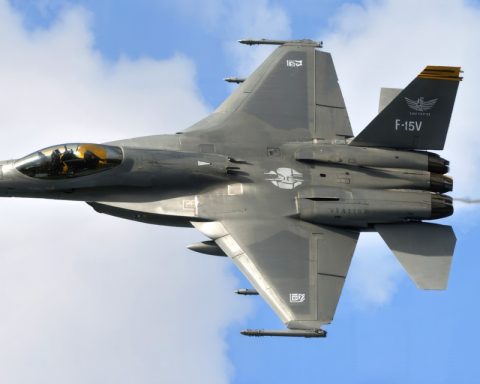In a bold leap towards the future of aerial warfare, Russia is developing the Mig-41, an advanced fighter jet poised to redefine air combat. Officially known as the PAK DP (Prospective Aviation Complex for Long-Range Interception), the Mig-41 is envisioned as the successor to the legendary MiG-31.
Speed and Stealth: The Mig-41 promises remarkable capabilities, including speeds surpassing Mach 4. This potential for extreme velocity, combined with cutting-edge stealth technologies, positions the jet as a formidable player in modern air defense. The incorporation of hypersonic capabilities could grant unprecedented interception power, enabling the aircraft to tackle threats that today’s jets find insurmountable.
Space Frontier: Beyond its speed, there are ambitious plans for the Mig-41 to operate in near-space environments. Speculations abound that it could be equipped to intercept low-orbit satellites or neutralize other space-based threats, marking a significant evolution in military aerospace strategy.
Technological Innovations: Incorporating the latest in AI-driven avionics, the Mig-41 could anticipate and adapt to threats in real-time, offering pilot-assistance systems that enhance maneuverability and operational awareness. The potential integration of laser weaponry further exemplifies the forward-thinking nature of this project.
While still shrouded in secrecy, the Mig-41 symbolizes a new era in air combat where speed, stealth, and space capabilities converge. As geopolitical tensions evolve, this technological marvel could redefine Russia’s aerial strategy and alter the global balance of power.
The Environmental and Economic Implications of Hypersonic Warfare: The Case of the Mig-41
The development of the Mig-41 fighter jet by Russia encapsulates the merging of speed, stealth, and aerospace capabilities—an advancement in military technology that could significantly impact not just warfare but also the environment and global economy. While this cutting-edge aircraft aims to set new paradigms in aerial defense, its introduction into international airspace invites a deeper examination of the broader implications it may have on humanity’s future and the world at large.
Environmentally Impactful Technologies:
The incorporation of hypersonic capabilities in the Mig-41, allowing it to reach speeds beyond Mach 4, carries potential environmental consequences. The energy requirements for achieving and sustaining hypersonic speeds are immense, leading to increased fuel consumption and greenhouse gas emissions. This raises concerns about the environmental footprint of such technology, especially if it becomes a new norm in military aviation.
Furthermore, the prospect of operating in near-space environments suggests that the Mig-41 might contribute to the growing issue of space debris. Should the aircraft be utilized to intercept low-orbit satellites or other space threats, the potential for collision could exacerbate the current crisis of cluttered space, complicating future space expeditions and satellite operations vital for telecommunications, weather monitoring, and global positioning systems.
Economic Impact and Technological Arms Race:
Economically, the development of the Mig-41 represents significant investment in defense technology. This, in turn, could spur an arms race among global powers, eager to match or counteract the capabilities of the Mig-41, potentially diverting funds from critical areas like healthcare, education, and sustainable infrastructure. The opportunity cost of such allocation could adversely affect economic growth, particularly in nations choosing to prioritize military expenditure over other societal needs.
Furthermore, the Mig-41’s advancement in AI-driven avionics and possible integration of laser weaponry could accelerate innovations in civilian sectors such as aerospace technology, robotics, and AI development. However, this dual-use technology poses ethical questions about militarization and its impacts on society, necessitating discussions on regulatory frameworks to ensure these technologies benefit humanity at large.
The Future Horizon:
Looking to the future, the Mig-41 could redefine international defense strategies and geopolitical dynamics. As nations invest in advanced military technologies, humanitarian benefits are possible through spin-off technologies, improved global safety through deterrence, and advancements in related fields. Nonetheless, the acceleration of such technologies demands careful consideration of international treaties and environmental policies to ensure sustainable development and the prevention of technological misuse.
The ascension of supersonic military aviation, as exemplified by the Mig-41, presents a dual-edged sword: it symbolizes progress and defense capability while challenging the sustainability and ethical governance of advanced military technology. The path forward must balance innovation with responsibility, ensuring that the remarkable advances in aerial combat translate into a safer, more prosperous future for humanity and the natural environment.
The Future of Aerial Warfare: Exploring the Mig-41’s Uncharted Horizons
In recent years, the aviation industry has witnessed transformative advancements that could redefine the landscape of air combat. At the forefront of these innovations is the Mig-41, officially known as the PAK DP, Russia’s ambitious successor to the formidable MiG-31. While discussions primarily focus on its remarkable speed and stealth capabilities, new elements surrounding the Mig-41 project warrant attention. Here, we explore the previously undisclosed facets and implications of this advanced fighter jet.
Features and Innovations
Modular Design:
A notable feature of the Mig-41 is its modular design, allowing for upgrades and modifications that can keep pace with rapidly evolving technological demands. This adaptability ensures the jet remains competitive and relevant for extended service life without necessitating full overhauls.
Autonomous Operations:
Beyond AI-driven avionics, the Mig-41 is speculated to have the potential for autonomous or semi-autonomous operations. This feature could play a crucial role in reducing pilot workload and increasing operational efficiency during complex and long-duration missions.
Pros and Cons of the Mig-41
Pros:
– Hypersonic Speed: Capable of reaching speeds over Mach 4, providing unmatched interception capabilities.
– Stealth Technology: Advanced design minimizing radar detection, crucial for modern warfare.
– Space Capabilities: Potential to engage space-based threats, including satellites, setting a new precedent in military defense.
Cons:
– Development Costs: Such advanced technology comes with a high price tag, potentially straining defense budgets.
– Technological Dependency: Reliance on cutting-edge tech could lead to vulnerabilities if systems are compromised.
– Political Ramifications: The introduction of such a powerful aircraft might escalate geopolitical tensions.
Market Analysis and Prediction
The Mig-41’s introduction is likely to influence military spending as nations reassess their aerial defense strategies. It could prompt investments in countering hypersonic threats and developing comparable technology. Furthermore, the aircraft might set a trend in developing dual-role air and space interception capabilities. Predicted to potentially enter service in the late 2020s, the Mig-41 could shift the balance in aerial and space defense.
Security Aspects and Controversies
Security concerns arise around the potential deployment of the Mig-41’s near-space capabilities. The ability to target satellites poses questions about the militarization of space and adherence to international treaties regarding space warfare. These aspects might spark global debates and calls for new regulatory frameworks governing space security.
Use Cases and Applications
The Mig-41’s versatility extends to various use cases:
– Strategic Defense Missions: Effective against high-speed incoming threats from long range.
– Space Surveillance: Ability to operate at high altitudes offers a unique vantage for monitoring near-space activities.
As the world watches the development of the Mig-41, it becomes evident that its capabilities could redefine the future of defense strategies. Its technological advancements, while promising, come with complexities and implications that the international community must consider. This aircraft will not only influence air combat but could herald a new era in space defense, impacting geopolitics on a global scale.
For more information on cutting-edge technology and defense innovations, visit Rostech.







